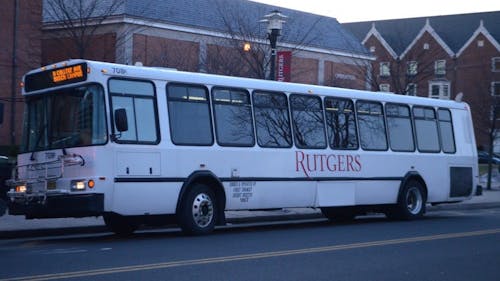Rutgers buses will now feature onboard Wi-Fi

Students will soon have access to free Wi-Fi across all Rutgers buses.
After more than a decade of updating bus times through NextBus, the Department of Transportation Services (DOTS) is switching over to TransLoc — a different public transit tracking system — in a move to update its services.
Onboard internet access, a tracking system that displays bus location and a tool that measures the number of students loaded on a bus are just a few new features that John Karakoglou, manager of DOTS, is looking forward to.
“The time was right now to also put the Wi-Fi on the buses, to give that extra convenience for the kids to be able to use their devices while they're going between College Avenue and Busch, and maybe give them a couple of minutes to listen to a song,” he said.
Instead of using RUWireless, riders can connect to a bus specific Wi-Fi network — accessible to all New Brunswick residents and Rutgers students. DOTS hopes to have beta testing underway by the end of the semester with a full roll out of internet services sometime during the fall.
DOTS first employed NextBus services in 2006 and first encountered issues with the system earlier this semester. The system was unable to track buses through the Rutgers App for approximately 48 hours, an issue that affected more than 50 universities and transit systems across the country, according to The Daily Targum.
Karakoglou said TransLoc will give DOTS more information and data that they can use to gauge when and where people travel throughout the day. Transitioning into a new system is part of the way they hope to lighten their everyday workload and build a better commuting experience for students.
Whenever signs posted in front of bus stops lose power, DOTS is tasked with a campus-wide game of pick up sticks — finding and fixing upward of 30 signs, he said. A system that provides DOTS with better location services gives it a better idea of how to coordinate bus services between noon and 7:30 p.m. — peak ride times.
“People don’t want to wait, the bus drivers are going to have to make the call at some point and say stop,” Karakoglou said. “Even though there’s a bus 10 feet behind it, the people want to be on that first bus. Let’s say Scott Hall or the SAC, there might be 300 to 400 people waiting to go to Livingston, the bus only holds 67 … It might give us the option to run a couple buses together or to maybe bypass the Scott Hall bus stop with one bus to go directly to the SAC.”
Unlike NextBus, TransLoc allows riders to find exactly where their bus is and helps dispel worries that DOTS is not running its buses during inclement weather or school closings, said Jack Molenaar, senior director of DOTS.
These updates play a small part of the University’s 2030 plan to update University transit hubs, housing, student centers and athletic facilities and includes the implementing roundabouts into areas with a heavy influx of traffic, according to the master plan.
“Rutgers 2030 envisions development at Rutgers over a 15-year time frame, 2015 to 2030, and is comprehensive in its scope; taking into account buildings, the natural and constructed landscape, transportation and infrastructure,” according to the plan.



